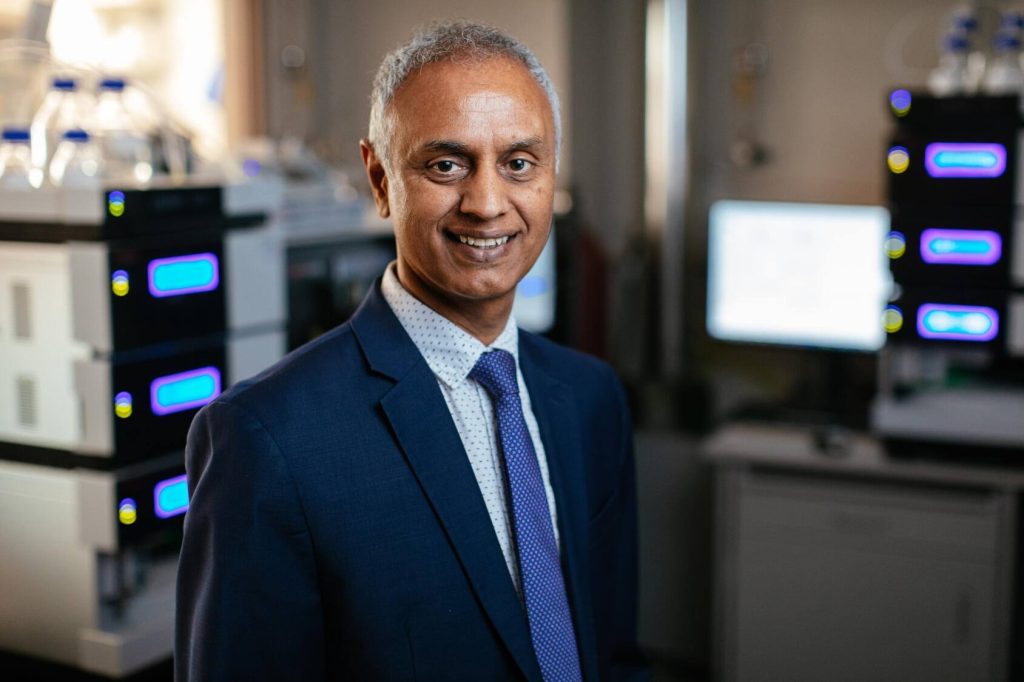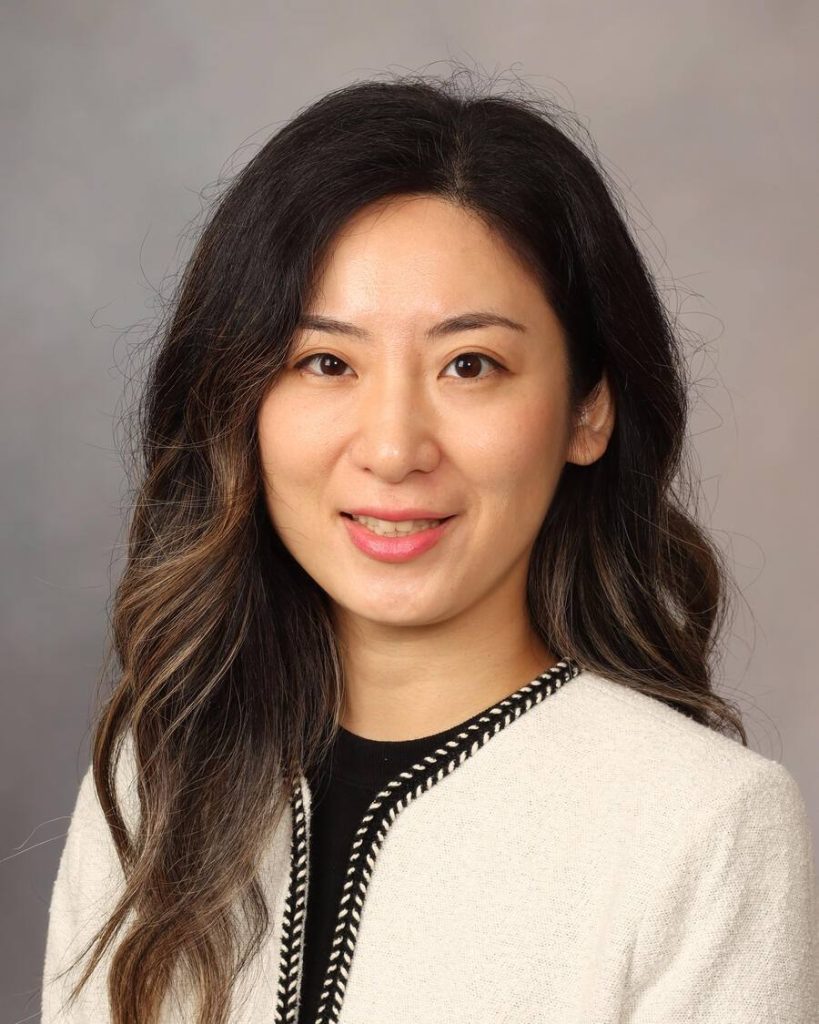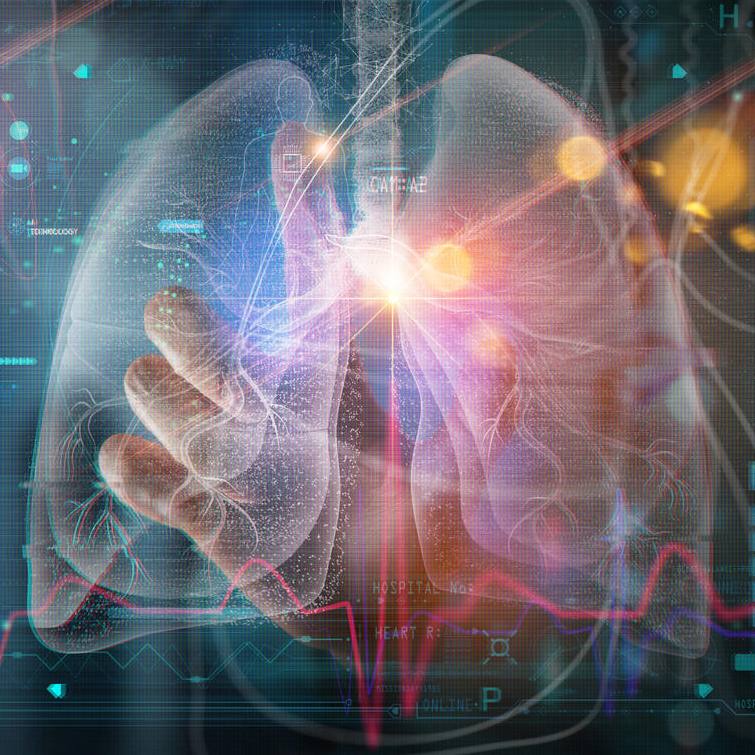-
Advancing medicine one lab test at a time
Mayo Clinic operates one of the largest clinical laboratories in the world. More than 87,000 samples pass through the labs from Mayo Clinic patients and Mayo Clinic Laboratories' clients per day. At Mayo Clinic Laboratories and the Department of Laboratory Medicine and Pathology (DLMP), these thousands of samples are tested for a large swath of molecules that can signal disease. Additionally, Mayo Clinic physicians and researchers develop new diagnostic tests every year. The innovation and capability to improve medicine fuels the work of clinical pathologist Akhilesh Pandey, M.D., Ph.D.

"The fact that we, as researchers, can find a new biomarker associated with a disease, develop a test to find it sooner and implement it into clinical practice, places Mayo Clinic at the forefront of the medicine of the future," he says.
Dr. Pandey's multidisciplinary research team consists of chemists and biochemists, molecular and computational biologists and experts in advanced biomedical instrumentation who push the boundaries of technology to develop more powerful tests to help detect and diagnose diseases earlier.
"Our lab is focused on problems and technologies where there is a direct and tangible path to discovering new findings that can be put into medicine in many ways, especially in terms of diagnostics. For us, it's all about translating research into the practice," he says.
He collaborates with more than 100 different researchers at Mayo Clinic to achieve this.
"DLMP consultants and staff are continually searching for ways to translate clinically relevant research findings into novel diagnostics that will provide our clinicians and patients the answers they need. Many of these findings come from our own investigators in DLMP or Mayo Clinic, but we also will keep abreast of advances from researchers worldwide. Our track record is impressive due to the efforts and creativity of consultants like Dr. Pandey and so many others," says Eric Hsi, M.D., chair of the Department of Laboratory Medicine and Pathology at Mayo Clinic.
Research and Practice
One group of genetic disorders that is particularly challenging to diagnose is called sphingolipidosis, which stems from the harmful accumulation of sphingolipids, a type of lipid molecule. Tay-Sachs disease is a form of sphingolipidosis where these lipids build up in the brain and spinal cord, causing nerve cell damage.
Most tests for sphingolipidosis can only screen for one specific form of the disorder at a time, targeting about 10 molecules, which makes the process laborious and time-consuming for both clinicians and patients.
Dr. Pandey and researcher Seul Kee Byeon, Ph.D., heard about this challenge from colleagues in Mayo Clinic's Department of Laboratory Medicine and Pathology. So they went to work designing a more efficient test.
The result: a single assay that can test for 47 different molecules linked to many kinds of sphingolipidosis, offering more efficient diagnostic testing.

"It's a huge gain, especially for clinicians who may suspect a patient has a rare and serious genetic condition but may not know where in the pathway the problem lies," says Dr. Byeon, who is the lead author on a study reporting the findings in the journal Clinical Chemistry.
This new test is still in development but will be rolled out for use in the near future at Mayo Clinic Laboratories. Dr. Byeon is also working on the next iteration of this assay, which would target hundreds of lipids.
From just one cell
Dr. Pandey's research teams in the Systems Biology and Translational Medicine Laboratory and the Advanced Diagnostics Laboratory use a sensitive but versatile technique called mass spectrometry to detect, identify and quantify molecules in lab samples, which can come from blood, tissue or other specimens.
In addition, Dr. Pandey's team conducts research using single-cell proteomics and single-cell lipidomics, which can uncover what proteins and lipids, respectively, are present in individual cells. They also apply a rapidly evolving approach called spatial biology to map where various molecules are in a specific tissue.
The information gleaned from these analytical techniques can lead to the discovery of biomarkers for a variety of conditions, from genetic disorders to cancer.
"We want to find the next generation of biomarkers and we have the technology to do it," he says.
Dr. Pandey's multidisciplinary research team has several other notable projects underway aimed at advancing diagnosis and treatment for a variety of diseases and disorders including:
- Multiple myeloma: Working to identify which patients with this blood cancer will respond to a certain class of drugs that stimulates the immune system to attack abnormal cells.
- Cholangiocarcinoma: Helping gastroenterologists detect this form of bile duct cancer using single-cell proteomics, which illuminate protein behavior in individual cells, with the goal of detecting this difficult-to-treat cancer earlier.
- Inherited metabolic disorders: Adapting a blood-based test that detects genetic defects in a complex chemical process known as glycosylation so that it can be used to detect metabolic changes associated with cancer.
Review the studies for a complete list of authors, disclosures and funding.







